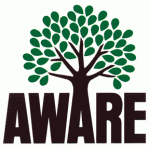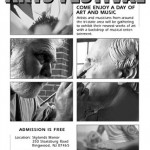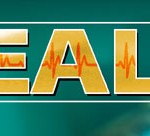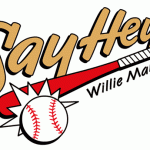ES: Thank you for taking the time to be interviewed today, I really appreciate it. Let’s start by talking about your educational background.
RB: Well, I have a B.A. In Graphic Design and an M.A. In Computer Animation from William Paterson University.
ES: What was your student experience like?
RB: It was interesting. I happened to be going to school during a major transitional period in the graphic design and animation industries. Early on, everything was being done by hand on paper. During this time, they were transitioning to doing everything on computers. Everything I was learning was brand new techniques and ideas. It was exciting to say the least.
ES: Did this put you at an advantage in the job market? Were you able to make any strong connections that were helpful for a career in art?
RB: Oh yes, of course! It was a new industry, so companies were hiring anyone who knew anything about computers. They were pulling people right out of college to work for them. I found two jobs while I was still in school. One of my design teachers was good friends with the owner of a package design firm. He was able to set me up with a job there.
ES: Package design? I did a lot of that last year in my graphic design class. We made all sorts of things…cereal boxes, toy boxes, album covers…It was a lot of fun!
RB: Oh I loved it! I was able to learn so much that I didn’t learn in school. I was able to see the practical use of design firsthand. I worked a lot with designing the pre-presses, which is the design before it’s printed on the packaging.
ES: What was your favorite part of that job?
RB: The thing I loved was that every day was different. We were always designing in a different format and using different techniques. You wouldn’t design a magazine cover the same way you would design a box for a snack food. They’re all different sizes and appeal to different demographics. In that respect there was a challenging aspect to it that really made you think about how you were lay out your design.
ES: How did you come to work at Farleigh Dickinson University?
RB: A student who was a year ahead of me was teaching a graphic design class there. He was graduating and asked me if I’d like to take over his job. He introduced me to the faculty and I was able to get my first teaching job, which I still have. I’d work at the package design firm during the day, the go to class at William Paterson, and then teach night classes at FDU. It was a tough schedule, but I learned a lot during that time so I’d say it was worth it. I continued to work at the package design firm for four years. I enjoyed my time there, but decided it was time to move on, and I began to work full time teaching at FDU.
ES: What is your job at FDU like?
RB: I’m the Director of the Animation and Computer Graphics program. I teach three classes a week, but it also allows me to do a lot of freelance work on the side. I’ve been doing a lot of website design and logo design recently. For a while, I was also doing some game design. I took a break from that but I’m starting to get back into it.
ES: Very interesting, it sounds like there are a lot of possibilities for a designer. What skills would you say are most important for an aspiring graphic designer?
RB: The big thing is you have to know your software. Today, graphic design is almost entirely computer-based. If you don’t know how to navigate and manipulate your basic design programs like Adobe Illustrator and Photoshop, you won’t accomplish much. At the same time, there are a lot of people in this day and age that know computers. Companies aren’t as desperate to hire just anyone who knows how to work a computer like when I was in school. The industry isn’t that new anymore. You need something to set you apart. This is where the artistic skills come in. For a job in graphic design, you need to have creative and innovative ideas. A fine attention to detail is very important as well. You simply have to have an eye for design and composition. You need to be able to tell a good layout from a bad one in order to be effective.
ES: Do you think that these are skills that come naturally?
RB: I think that a lot of it does come naturally. Some people are just born with a better idea of what colors and fonts create an aesthetically pleasing composition. If you don’t start out with this base knowledge, it can be very difficult to grow as an artist.
ES: What would you say are the biggest challenges of being a graphic designer?
RB: It would definitely be keeping up with the software. The industry is always changing. There are always new techniques and programs coming out, and you have to stay on top of them or you’ll get left behind. At times it can be exhausting, but it’s also rewarding.
ES: What advice would you have for me if I wanted to become a graphic designer?
RB: Keep a portfolio of your work! That’s key. A design company will hire you based on the work you’ve previously produced, and what they think you are capable of producing in the future. You should also keep in mind that you may not have a lot of options for work as soon as you leave school. It becomes easier as you build up your portfolio and create a professional background for yourself. Your first job is very important. You should be prepared to move for it. You might find your dream job, but it’s in Texas. Don’t write it off. Be open to the new experience. As you gain experience, you’ll be able to someday work in your ideal location. As far as getting started, I know there are a lot of websites that cater to free lance designers. People post requests for what they want and designers bid to get the job. We never had that when I was starting off, but you should take advantage of it. It’s a great way to to build your portfolio.

http://www.fduarts.org/pages_faculty/barkley/barkley_index.htm




